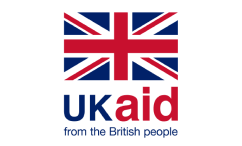...participate in political decision-making and development planning at all levels and in all sectors. Participation in conflict-prevention processes. ‘[G]ender-blind conflict prevention measures cannot adequately predict and prevent conflict’. It is only by including female stakeholders and using a gendered analysis of conflict that States Parties can design appropriate responses.139 States should: Reinforce and support women’s formal and informal conflict prevention efforts; Equally involve women in national, regional and international organisations, as well as in informal, local or......themselves’.16 The Committee has stated that the term ‘conflict’ can be interpreted to include a variety of circumstances: ‘conflict prevention, international and non-international armed conflicts, situations of foreign occupation and other forms of occupation and the post-conflict phase’.17 The meaning of ‘conflict’ under the CEDAW is more extensive than in IHL, as it may also cover ‘internal disturbances, protracted and low-intensity civil strife, political strife, ethnic and communal violence, states of emergency and suppression of mass......consult the “International Human Rights Law” chapter, “Introduction” section, and the “Introduction” chapter, “Methodology” section. III. Obligations🔗 Prevention🔗 III.1 States must criminalise CRSV🔗 Under article 2, States must adopt legislative and other measures prohibiting all forms of discrimination against women. States have a due diligence obligation ‘to prevent violence or violations of human rights, protect victims and witnesses from violations, investigate and punish those responsible, including private actors, and provide access to redress for human......of substantive equality; Implement the Security Council agenda on women, peace and security in conformity with the CEDAW and its Optional Protocol; Allocate adequate budgets to the implementation of the Security Council agenda on women, peace and security.52 III.4 States’ obligations under the CEDAW must be fulfilled both within and outside their territory🔗 Women’s rights in conflict prevention, conflict and post-conflict processes are affected by various actors, including the State where the conflict arises, neighbouring......right to acquire a nationality. States should implement Identification programmes in a non-arbitrary and non-discriminatory manner ‘within a reasonable time-frame’; Keep children born of conflict-related rape and their mothers informed and consulted on any decisions affecting them. States should involve them in conflict prevention, peace building and post-conflict reconstruction; Provide children born of rape with ‘equal access to vocational training, life skills and socioeconomic support, sports and leisure activities, religion and cultural activities by means...

 EN
EN FR
FR ES
ES UK
UK



